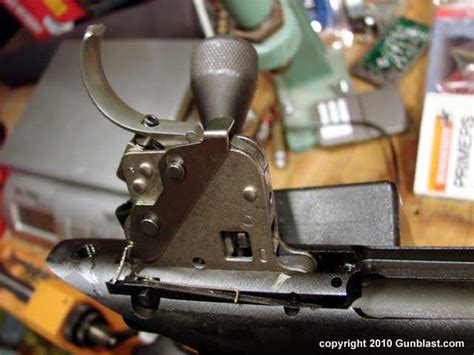Get a Lighter Trigger Pull: Remington 700 Adjustment
The Remington 700 is a legendary rifle, known for its accuracy and reliability. However, many shooters find the factory trigger pull too heavy. A heavier trigger can negatively impact accuracy and shot consistency. Fortunately, adjusting the trigger pull on a Remington 700 is a relatively straightforward process, although it requires caution and precision. This guide will walk you through the process, addressing common questions and concerns. Always prioritize safety and consult your owner's manual before attempting any firearm modifications.
Understanding Your Remington 700 Trigger
Before diving into the adjustment, it's crucial to understand the Remington 700 trigger mechanism. It's a two-stage trigger, meaning it has a distinct take-up and a break. The adjustment screw(s) control the weight of the second stage, the final break before the firing pin is released. Never attempt to adjust the first stage. Doing so can lead to unsafe conditions.
How to Adjust the Remington 700 Trigger Pull
The process for adjusting your Remington 700 trigger varies slightly depending on the specific model and year of manufacture. However, the general principles remain consistent. You will need a small punch, a screwdriver (usually a flathead), and a trigger pull gauge (highly recommended for accurate measurement).
-
Safety First: Always unload the firearm and visually inspect the chamber to ensure it's empty. Point the firearm in a safe direction. Consider using a gun lock or other safety mechanism.
-
Locate the Adjustment Screw: The adjustment screw is typically located on the bottom or side of the trigger assembly. It's usually a small, slotted screw.
-
Adjust the Screw: Using a small flathead screwdriver, carefully turn the adjustment screw. Turning the screw clockwise increases trigger pull weight, while counterclockwise decreases it. Make small adjustments (1/4 to 1/2 turn at a time) and test the trigger pull using your trigger pull gauge.
-
Testing and Fine-Tuning: After each adjustment, test the trigger pull weight using your gauge. This ensures you're making precise adjustments and avoiding an overly light or dangerously light trigger.
-
Over-Travel Adjustment (Some Models): Some Remington 700 models have a separate over-travel adjustment screw. This screw controls how far the trigger travels after the break. Adjusting this can improve the trigger's feel but isn't crucial for reducing trigger pull weight.
-
Caution: Be cautious not to over-adjust. An extremely light trigger can lead to accidental discharges. Aim for a trigger pull weight that is comfortable and safe for you, ideally between 3 and 5 pounds for most shooting applications.
What is the Ideal Trigger Pull Weight for a Remington 700?
What is a good trigger pull weight for hunting?
For hunting, a trigger pull weight between 3 and 5 pounds is generally considered ideal. This weight provides sufficient safety while allowing for accurate shots. Heavier triggers are acceptable, but lighter triggers beyond this range can be unsafe.
What is a safe trigger pull weight for target shooting?
For target shooting, many competitors prefer a lighter trigger pull (around 2-3 pounds). However, safety should always remain a priority, and lighter triggers demand even more discipline and control.
What if my trigger is too light?
If your trigger pull is too light, carefully turn the adjustment screw clockwise to increase the weight. Remember to test the pull weight frequently using your gauge. If you're uncomfortable making the adjustment yourself, consult a qualified gunsmith.
Can I adjust my Remington 700 trigger myself, or should I use a gunsmith?
While adjusting the Remington 700 trigger is possible for many experienced shooters, it's crucial to have mechanical aptitude and understand firearms safety. If you're unsure about the process, it's best to consult a qualified gunsmith. They possess the expertise to safely and accurately adjust your trigger.
Conclusion
Adjusting the trigger pull on a Remington 700 can significantly improve your shooting experience. By following these steps and prioritizing safety, you can achieve a more comfortable and accurate trigger pull weight. Remember, a safe and consistent trigger is essential for both accuracy and responsible gun handling. Always handle firearms responsibly and safely. This guide provides information only; it does not constitute professional advice. Consult with a qualified gunsmith for any complex adjustments or if you have any concerns.

